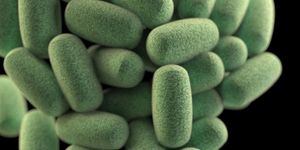Scientists to Spiders: How Do You Handle Sticky (Nanofiber) Situation?
The term "biomimicry" describes the models and methods harnessed by scientists to imitate natural elements, in order to solve complex problems. A team of Austrian researchers has figured out a way to tame messy, sticky nanofibers, by mimicking the surface nanostructure on spiders' hindleg.
With a diameter in the nanometer range, nanofibers can be made of different polymers such as collagen, cellulose, silk fibroin, and polysaccharides. Due to their unusual physical properties, nanofibers are the most sought-after materials for many advanced applications, including tissue engineering, drug delivery, battery construction, and functional textiles. But these marvelous materials are inherently sticky to any surface they touch, which presents a challenge for their production and processing.
Cribellate spiders, which include tens of thousands of spider species, are glue-affixing orb weavers. They can build complex funnel or tube webs for capturing prey. Thanks to a comb-like structure, the calamistrum, on their hindmost legs, these weavers can handle spider silk, a proteinous fiber, with ease.
In this study, the researchers placed the comb under a scanning electron microscope (SEM), and observed that its surface is covered with fingerprint-like nanoripples. They found that these nanostructures help prevent the nanofiber to be in close contact with the spider's leg and educing the adhesive van der Waals forces between the nanofibers and surface.
The Austrian team sculpted the nanoscale grooves onto a plastic foil with laser and then coated the foil with gold to reduce its Gold coating was performed to reduce electrostatic interaction. They then tested the anti-adhesive property of the sculpted foil against vs. normal foil. The biomimicry design allows the engineered surface to be much less sticky, behaving similarly to the spider's comb.
The researchers hoped that the technical surface they developed can be adapted to improve tools for handling nanofibrous materials.
Source: ACS via Youtube








